Posted by: Ken @ 9:25 pm
This was a week for Golden-winged Buntings and some other creatures that did not always fit their given names.
Every winter since 2007,when we first saw a Grasshopper Sparrow in the wetlands near our Florida home, we have looked for another. This past week, while walking along a weedy patch next to a lake in our subdivision, I saw a small bird fly up and almost immediately drop down again out of sight. With patience, we coaxed the bird up into view by squeaking, and to our surprise it flew over to a bush and posed for photos.
This migrant Grasshopper Sparrow is more brightly plumaged than those native to Florida:
This photo illustrates its distinctive central crown stripe and provides only a glimpse of one of the small bright yellow patches at the bend of its wing that gave the Grasshopper Sparrow its original name of “Golden-winged Bunting:”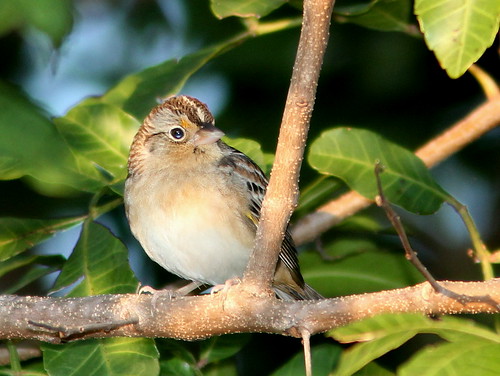
I found this photo from Illinois that I had taken in June of 2009. It appeared to justify the label that Audubon put on his painting of a “Golden-winged Bunting:”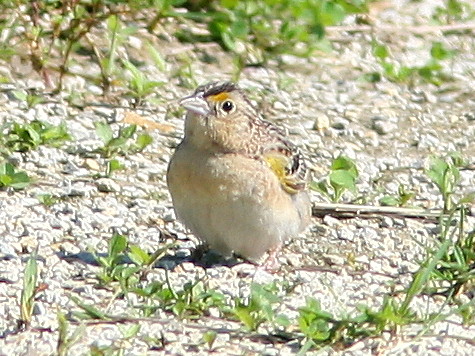
More somber in its beauty,this bird was named, not for the Greek goddess, but for its weak call. Famous because it was the first wild bird banded in America, by Audubon himself, the Eastern Phoebe is a common winter visitor: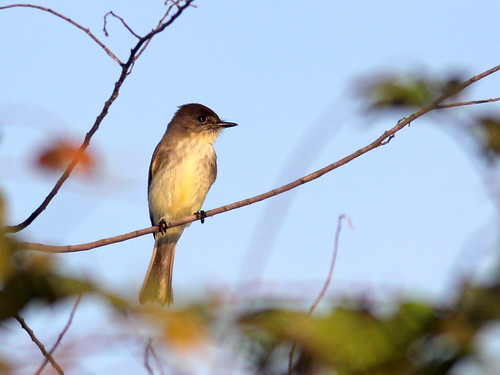
Palm Warblers do not warble, and they spend more time on the ground than in palm trees. This one looks especially peaceful in subdued morning light: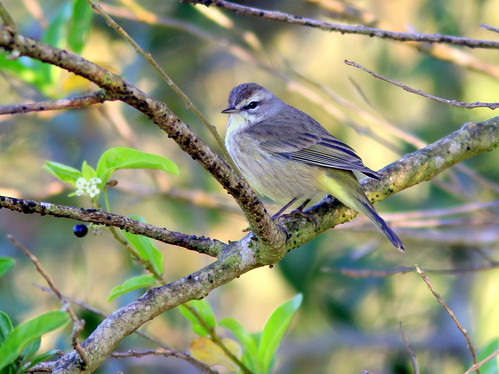
Blue-gray Gnatcatchers are certainly bluish gray, but they expend more effort catching spiders and caterpillars, than flying after gnats:
This gnatcatcher seemed to think I was a gnat, as it launched right at me when I depressed the shutter: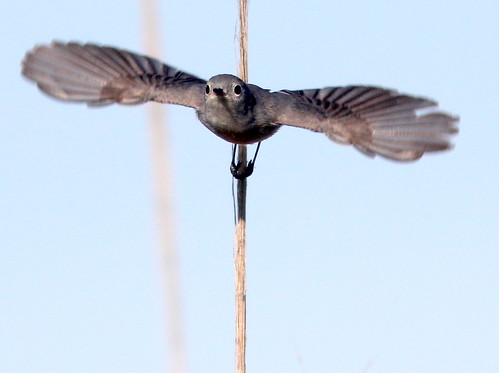
A visit to Chapel Trail Nature Preserve in the neighboring city of Pembroke Pines provided us with great views of an aptly-named Red-shouldered Hawk:
Exotic Purple Swamphen populations have rebounded in spite of a campaign to exterminate them, but we worry that the gunners may have knocked down the population of similarly-colored Purple Gallinules: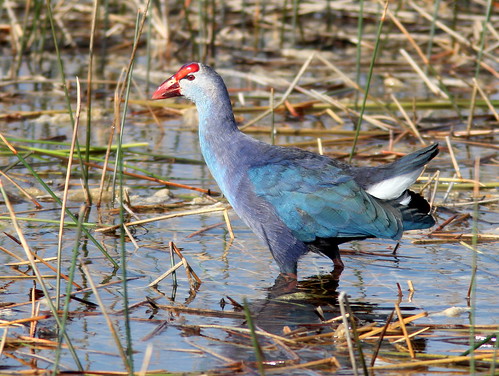
Here is a Purple Gallinule for comparison (I grew up calling them Florida Gallinules):
Its relative, an uncommonly beautiful Common Moorhen (called a gallinule when I was a kid in New Jersey) sees its reflection in the calm water: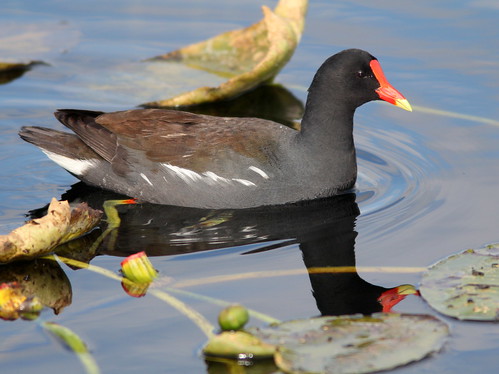
At Tree Tops Park in Davie, Florida, a Green Heron roosts on the boardwalk railing, but it shows not a trace of green:
In the wetlands near our home, a Great Egret was ready to take off: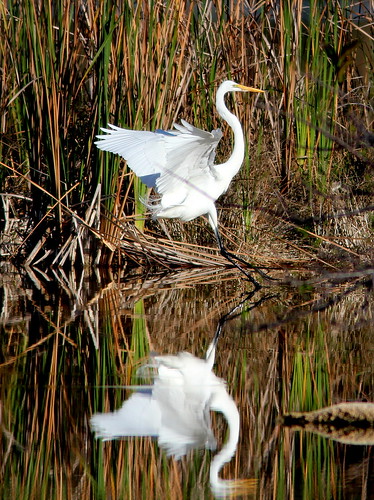
My telephoto lens had a limited field of view, and I could not catch the egret’s entire reflection:
Most of the Little Blue Herons we saw looked like this one, small and blue:
However, a white bird flew close by– another egret? Its green legs and bluish beak tipped with black revealed it to be an immature Little Blue Heron:
Back-lit against the water, dark feathers are seen, beginning to replace the white: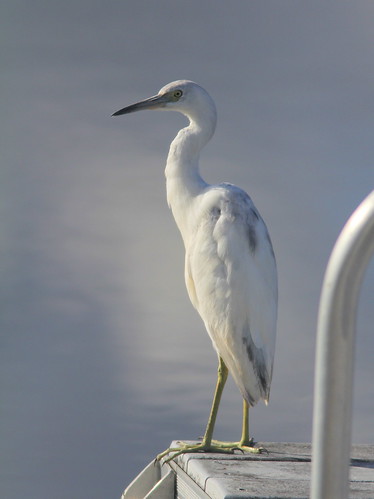
Dragonflies are starting to increase in numbers. Here is a Halloween Pennant:
On closer inspection, does it wear a Halloween mask?:
White Peacocks lack feathers, and were numerous this morning:














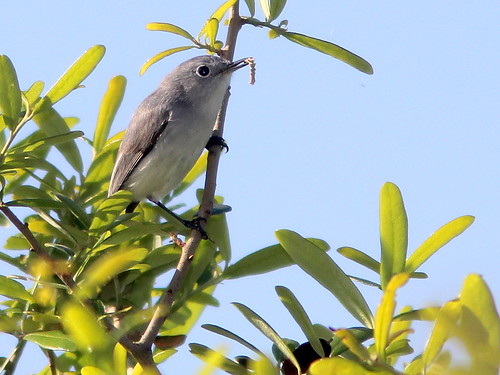
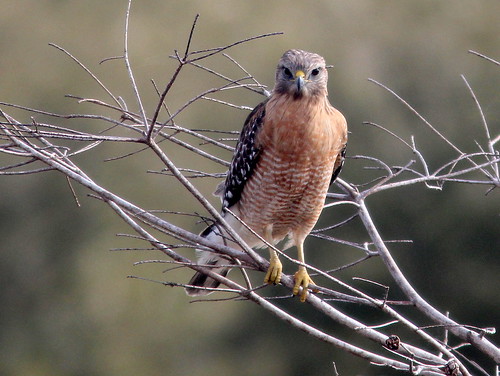
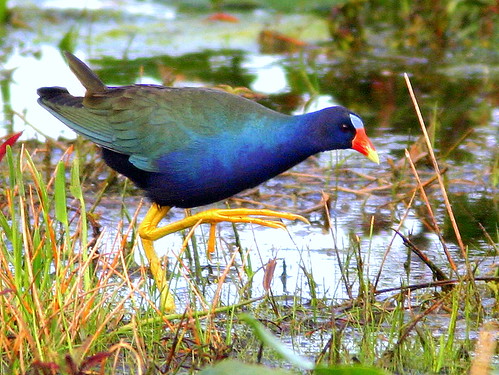
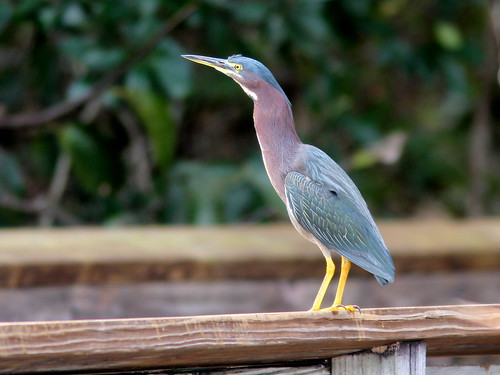
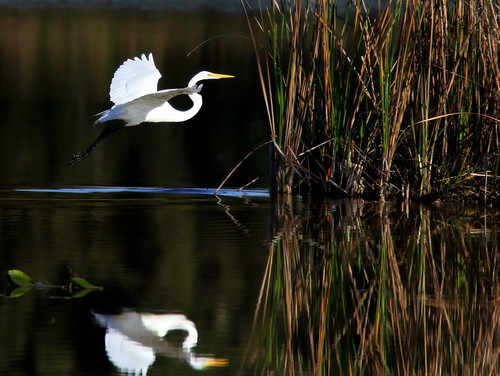
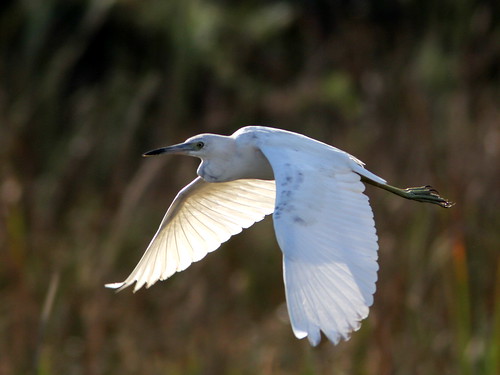

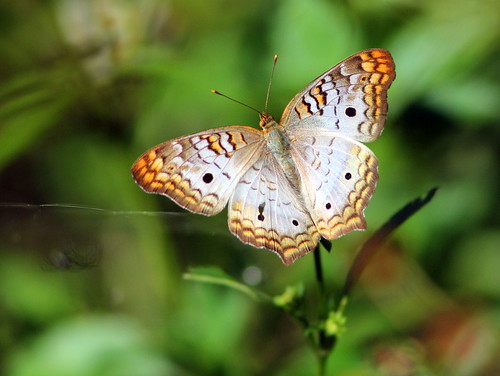
March 2nd, 2011 at 11:56 pm Wow! I’m delightedly overwhelmed! These are all such lovely photos!
March 3rd, 2011 at 1:35 am What a super collection of photos Ken! That dragonfly is awesome! I must say though that the Blue-gray Gnatcatcher coming at you is priceless. I am partial to the elusive Grasshopper Sparrow and you have captured it beautifully!
March 3rd, 2011 at 8:37 am You probably realize my blog about the color of herons was admittedly tongue-in-cheek. Strictly speaking, there are no birds with blue or green pigment in their feathers. Generally, as I understand it as a layman, birds’ feathers are either white (contain no pigment) or shades and combinations of black and red (contain different types, concentrations and combinations of melanin). The blue and green colors are due to diffraction of light, related to the structure of the feathers, or iridescence from tiny reflective plates on the feathers.Others may wish to elaborate or correct my brief explanation.
The adult Little Blue Heron that I depicted was quite dark because of the low light. It can sometimes look almost black or dark gray. In bright light there are beautiful shades of purple on its neck and chest, and its body is quite bright blue-gray. The Green Heron can, indeed, look green in certain light. In full sunlight they tend tolook blue as does the one in my photograph. Likewise, that Purple Gallinule might appear brown and blackish in the shadows or a heavy overcast sky.
March 3rd, 2011 at 1:27 pm I am totally blown away by your post. After my recent trip to Florida and experiencing first hand the variety and beauty of the estuary along the coast I can now comprehend a bit better the dazzling array you have shared. Your photography is brilliant. It is amazing how you handle the lighting of these shockingly white birds. We northerners are buried in snow and the molasses slow approach of spring is torture. Your images of grand wading birds, butterflies, and dragonflies heighten the anticipation of a warming earth. Until then…;-)WBW
March 3rd, 2011 at 5:17 pm Wonderful photos on this blog! Glad to have found you, for which we can all thank Springman. Great work here.
March 4th, 2011 at 11:35 am Great photos!! Boom & Gary of the Vermilon River, Canada.
March 4th, 2011 at 2:17 pm Beautiful images.
March 5th, 2011 at 1:37 pm Great photos- I love the egret reflection, even if slightly cut off. Nicely done!